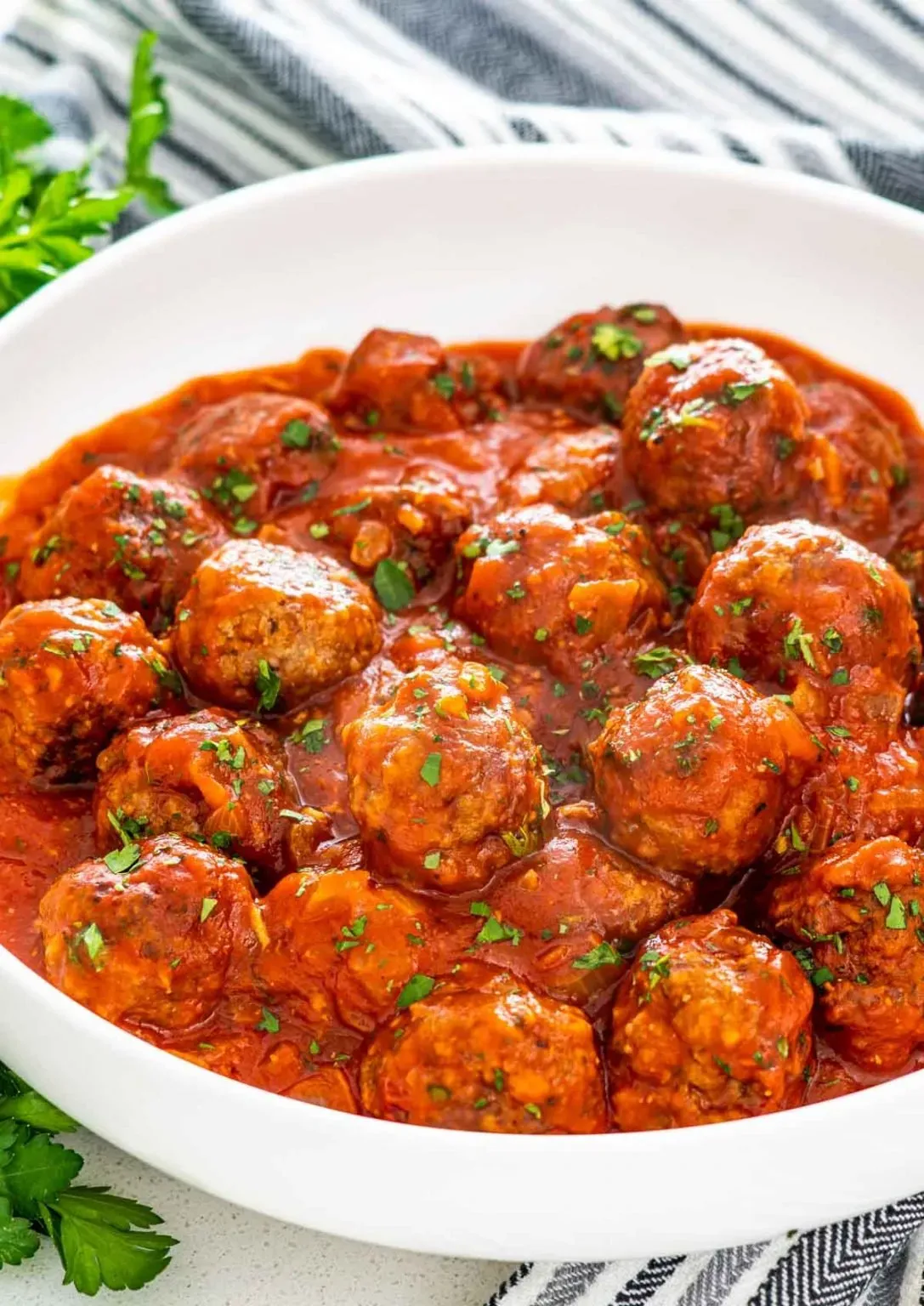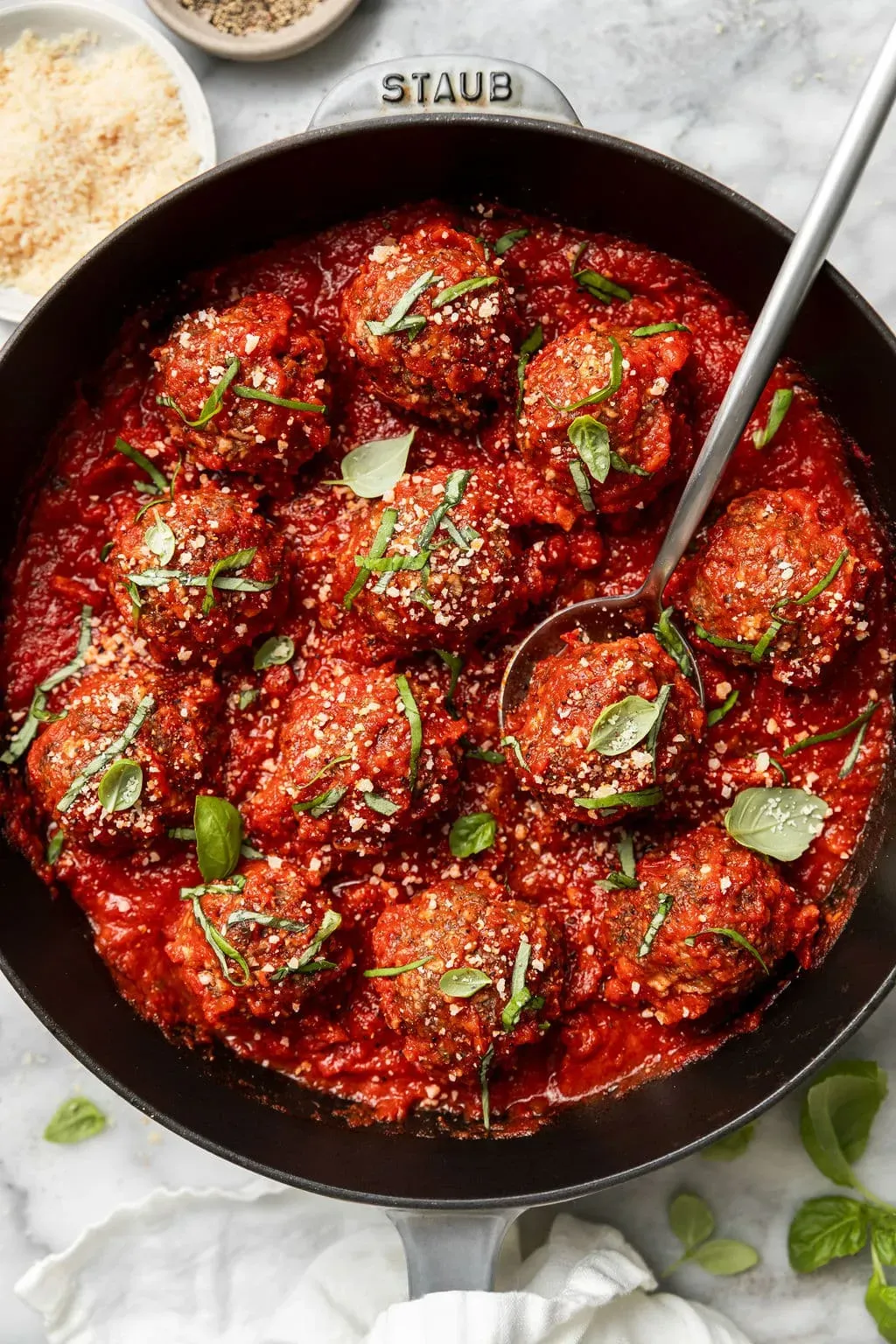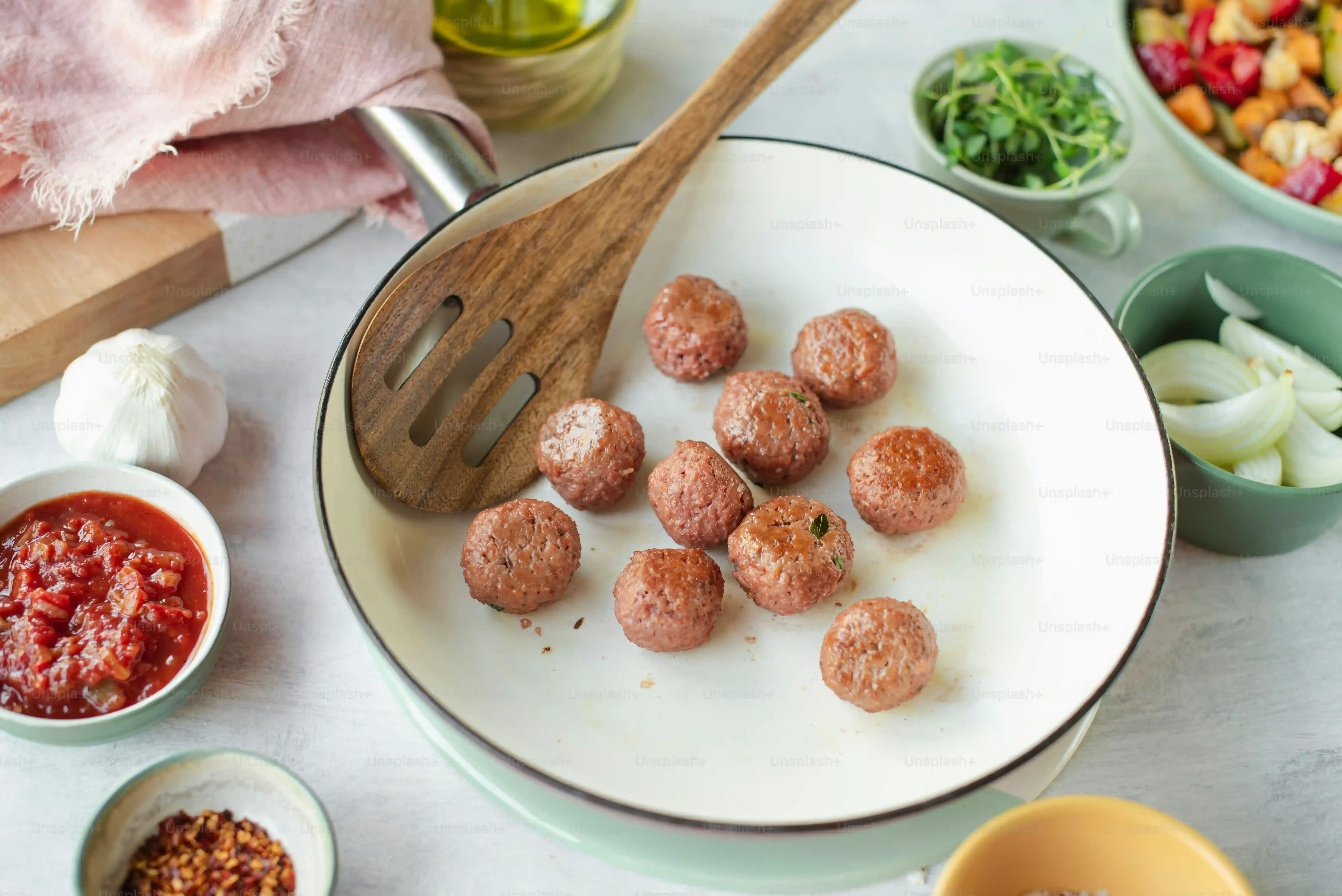Table of Contents
Let's be honest, everyone thinks they know how to make Italian meatballs. But how many times have you bitten into one that felt more like a golf ball than a tender, flavorful bite? It's a common culinary crime, turning what should be a comforting classic into a dry, dense disappointment. We're here to fix that. Forget those sad, tough spheres you've encountered before. We're diving deep into crafting meatballs that are genuinely soft, juicy, and packed with that authentic Italian-American flavor you crave.
MustHave Ingredients for Tender Italian Meatballs

MustHave Ingredients for Tender Italian Meatballs
Let's talk about the foundation. You can have all the fancy techniques in the world, but if you start with the wrong stuff, your Italian meatballs are doomed from the jump. The goal here is tender, juicy, and flavorful, not little brown rocks. That means paying attention to the basics. You need a good mix of ground meat – typically beef and pork is the classic combo, offering a balance of flavor and fat that keeps things moist. Don't skimp on quality here; mystery meat won't cut it. Then comes the binder and moisturizer crew: breadcrumbs (preferably fresh or good quality dry, not that dusty stuff), milk (or sometimes water or broth), and eggs. These are non-negotiable for creating that sought-after soft texture in your recipes with italian meatballs. And flavor? That comes from grated cheese (Parmesan or Pecorino Romano are standard), fresh parsley, and aromatics like garlic and sometimes finely minced onion, cooked just until softened so they don't add crunch.
Essential Ingredients Checklist:
- Ground Meat (Beef and Pork blend recommended)
- Breadcrumbs (Fresh or Panko work well)
- Milk (or other liquid)
- Eggs
- Grated Cheese (Parmesan or Pecorino)
- Fresh Parsley
- Garlic
- Salt and Black Pepper
Mixing and Forming Your Classic Italian Meatballs

Mixing and Forming Your Classic Italian Meatballs
The Gentle Art of Mixing
Alright, you've got your beautiful pile of ingredients ready. Now comes the part where many people go wrong: the mix. Think of this like making biscuit dough or pie crust – overworking is the enemy. You want to combine everything just until it's incorporated. Get your hands in there (it's the best way, trust me), but be gentle. Don't knead it like bread dough. The goal is to distribute the ingredients evenly, not to develop the meat's protein structure, which leads to tough meatballs. Mix until you see everything come together, no dry spots, no huge clumps of cheese or parsley. That's it. Stop. Over-mixing is a cardinal sin in the world of recipes with italian meatballs.
Perfecting the Shape and Size
Once your mixture is ready – maybe you even chilled it for a bit, which can help – it's time to form the meatballs. Size matters here. Too small and they cook too fast and risk drying out; too large and they can be difficult to cook through evenly. A good size is somewhere between a golf ball and a ping pong ball, maybe about 1 ½ to 2 inches in diameter. Use a scoop if you want uniform size, or just eyeball it. Roll them gently between your palms, applying just enough pressure to make them hold their shape. You don't need to make them perfectly smooth spheres; a little rustic charm is fine. Just ensure they're relatively compact so they don't fall apart during cooking.
Ever wondered why some meatballs hold together and others crumble? Often, it comes down to this step and the gentle mixing before it.
Common Mistakes to Avoid When Mixing & Forming:
- Over-mixing the meat mixture.
- Using cold, hard butter (oops, wrong recipe! But the principle of temperature matters!).
- Forming meatballs that are drastically different sizes.
- Rolling them too tightly, squeezing out moisture.
- Not washing your hands before and after (seriously, food safety!).
Cooking Methods: Baking vs. PanFrying Italian Meatballs

Cooking Methods: Baking vs. PanFrying Italian Meatballs
The Case for Baking Your Meatballs
So, you've mixed and rolled your beautiful meatballs. Now what? The first fork in the road when tackling recipes with italian meatballs is how to cook them. Baking is often touted as the easier, cleaner method, and honestly, it is. You line a baking sheet, pop your meatballs on it, and slide it into a hot oven. No splattering oil, no standing over a hot stove flipping each one. It’s great if you're making a big batch. Baking gives them a nice, even brown exterior, and they cook through consistently. They might not get the same deep, craggy crust as pan-frying, but for sheer convenience and less mess, baking is a solid choice. Just make sure your oven is properly preheated; nobody likes a pale, flabby meatball.
The Deep Flavor of the Pan-Fry
Ah, pan-frying. This is the old-school method, the one your nonna probably used. It requires a bit more attention, a bit more grease, but proponents swear it delivers a depth of flavor baking just can't match. You heat oil in a skillet – enough to come about halfway up the meatballs – and brown them on all sides. This creates a glorious, uneven crust with crispy bits that add texture and caramelized flavor. The trade-off? You're standing there, flipping, watching for splatters, and dealing with more cleanup. But for those who prioritize that intense, browned-meat flavor before simmering them in sauce, pan-frying is the only way to go for truly classic recipes with italian meatballs.
Choosing Your Path (Or Both)
Which method is right for you? It depends on your priorities. If time is tight and mess is a major deterrent, bake 'em. If you crave that intense, savory crust and don't mind the extra effort, grab a skillet. Some folks even combine the methods: a quick pan-sear to get that initial crust, then finish them in the oven or simmer them in sauce to cook through gently. This gives you the best of both worlds – crust and even cooking. Experiment with both and see which one you prefer for your go-to recipes with italian meatballs. There's no single right answer, just the one that gets you the most delicious result in your kitchen.
Method | Pros | Cons |
|---|---|---|
Baking | Easy cleanup, less hands-on, good for large batches, even cooking | Less intense crust development, flavor can be slightly less deep |
Pan-Frying | Deep, crispy crust, intense caramelized flavor | Messier, requires more attention, harder for large batches |
Beyond Spaghetti: Serving Your Italian Meatballs

Beyond Spaghetti: Serving Your Italian Meatballs
Beyond the Red Sauce Staple
we get it. Meatballs and spaghetti with marinara is a classic. It's comforting, familiar, and frankly, delicious. But limiting your perfectly crafted Italian meatballs to just that feels a bit like owning a sports car and only ever driving it to the grocery store. These little flavor bombs deserve more stage time! Think about meatball subs – toasted bread, melted cheese, maybe some sautéed peppers and onions? Pure handheld heaven. Or how about serving them as an appetizer? Skewer them with some cherry tomatoes and basil, perhaps alongside a dipping sauce that isn't just plain tomato. It shows off your hard work before the main event even starts. Don't trap your recipes with italian meatballs in a single serving destiny.
Creative Ways to Plate 'Em Up
Let's push the boundaries a bit further. Ever tried meatballs in a soup? A hearty minestrone or a simple broth with pasta can be elevated significantly by dropping in a few tender meatballs. Meatball pizza? Absolutely. Scatter them over your favorite pie before baking. Or consider a less common pairing, like creamy polenta or even mashed potatoes, letting the rich sauce coat something other than pasta. A simple side of crusty bread to sop up the extra sauce is mandatory, no matter how you serve them. The point is, once you've mastered making tender, juicy recipes with italian meatballs, the serving possibilities open up dramatically. Don't be afraid to experiment.
Serving Suggestions Beyond Spaghetti:
- Meatball Subs (toasted, with cheese and sauce)
- Appetizers (skewered, with dipping sauce)
- In Soups (like minestrone)
- On Pizza
- With Creamy Polenta or Mashed Potatoes
- As part of a hero or grinder sandwich
- Served simply with crusty bread for dipping
Keeping Your Italian Meatballs Delicious: Storage

Keeping Your Italian Meatballs Delicious: Storage
Fridge Life: Keeping Them Fresh
so you've made a glorious batch of Italian meatballs, and somehow, miraculously, you haven't eaten them all in one sitting. Good job, you! Now, how do you keep those precious leftovers tasting just as good tomorrow, or the day after? The fridge is your short-term friend. Let the meatballs cool down completely before you even think about packing them away. Sticking hot food straight into the refrigerator is a fast track to bacterial growth and can mess with the temperature of everything else in there. Once they're cool, pop them into an airtight container. This is key to preventing them from drying out and absorbing weird fridge smells. Stored properly, your Italian meatballs should be perfectly good for about 3 to 4 days. Perfect for a quick lunch or dinner later in the week.
Freezing for Future Meatball Emergencies
What if you made a really big batch, or you just want to save some for a rainy day (or a busy Tuesday)? Freezing is your best bet for long-term storage of recipes with italian meatballs. Again, make sure they are completely cool. You have a couple of options here. You can freeze them in a single layer on a baking sheet first until they're solid – this is called flash freezing – and then transfer them to a freezer bag or container. This prevents them from sticking together, so you can grab just a few at a time. Or, if you plan to use them all at once, you can portion them directly into freezer-safe containers or bags. If you're freezing them already in sauce, even better; the sauce helps protect them from freezer burn. Label everything with the date so you don't end up playing freezer roulette months down the line. Properly frozen, they'll keep well for up to 3 months, maybe even a little longer, though quality might start to degrade slightly after that.
Meatball Storage Cheat Sheet:
- Cool completely before storing.
- Use airtight containers or freezer bags.
- Refrigerate for up to 3-4 days.
- Freeze for up to 3 months.
- Flash freezing helps prevent sticking.
- Label everything with the date.
Your Italian Meatball Journey Ends (For Now)
So there you have it. The path to truly tender, flavorful Italian meatballs isn't paved with mystery, but with attention to detail – from the bread and milk soak to the gentle mixing and the cooking method. It takes a little effort, sure, but the payoff is a world away from those dry, sad excuses for meatballs you might encounter elsewhere. Now go forth, mix, roll, and cook. Your efforts will be rewarded with meatballs that actually live up to the name. Don't mess it up.